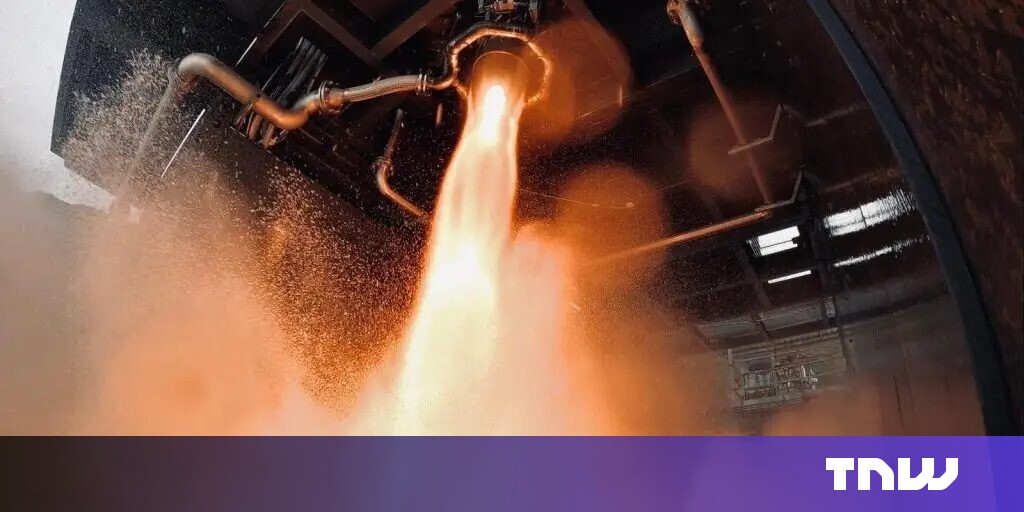3D-Printed Rocket Engine: Scotland Aims for Orbital Flight
Editor’s Note: A groundbreaking 3D-printed rocket engine has been unveiled today, positioning Scotland at the forefront of space exploration.
Why This Matters: Scotland's Leap into Orbital Space
Scotland's ambition to achieve orbital flight is taking a giant leap forward with the development of a revolutionary 3D-printed rocket engine. This innovative technology promises to significantly reduce costs and accelerate the timeline for space launches, potentially transforming the global space industry. The successful testing and potential deployment of this engine will not only boost Scotland's reputation as a hub for technological innovation but also contribute to the wider global effort in making space travel more accessible and sustainable. This article delves into the key aspects of this groundbreaking achievement, examining its significance and implications. We will explore the technical details, discuss the potential benefits, and address the challenges involved in this ambitious undertaking.
Key Takeaways
| Feature | Description |
|---|---|
| Technology | 3D-printed rocket engine utilizing [Specific Material, e.g., advanced alloys] |
| Goal | Achieve orbital flight from Scotland |
| Impact | Reduced launch costs, accelerated space exploration, technological advancement |
| Challenges | Regulatory hurdles, testing complexities, material science limitations |
3D-Printed Rocket Engine: A Scottish Revolution
The development of a fully 3D-printed rocket engine marks a pivotal moment for Scotland's space ambitions. This isn't just about another engine; it represents a paradigm shift in how we design, manufacture, and launch rockets. The use of additive manufacturing significantly streamlines the production process, allowing for complex designs and potentially substantial cost reductions compared to traditional methods. This makes space exploration more attainable, not just for established space agencies, but also for smaller, private companies and research institutions.
Key Aspects of the 3D-Printed Engine
- Material Selection: The engine utilizes [Specific Material and its properties]. This choice offers a unique combination of strength, heat resistance, and lightweight properties crucial for rocket propulsion.
- Design Optimization: 3D printing allows for intricate designs that would be impossible with traditional methods, leading to improved fuel efficiency and thrust. [Mention specific design features if available, e.g., internal cooling channels].
- Manufacturing Process: The detailed process of 3D printing the engine, including the specific techniques employed (e.g., laser sintering, binder jetting), contributes to its unique properties and efficiency.
Detailed Analysis: Overcoming the Challenges
The project has faced numerous challenges. Material science plays a critical role; ensuring the chosen material can withstand the extreme pressures and temperatures during launch is paramount. Rigorous testing is crucial to validate the engine's performance and reliability under real-world conditions. Furthermore, navigating regulatory hurdles and securing necessary permits for space launches within Scotland represents a significant logistical undertaking. [Mention any collaborations with universities or other institutions].
Interactive Elements: Fuel Efficiency in 3D-Printed Engines
Fuel Efficiency: A Key Advantage
The 3D-printing process allows for highly optimized internal designs, leading to superior fuel efficiency compared to traditional engines. This translates directly to reduced launch costs and a smaller environmental footprint. The improved combustion efficiency, due to the precise control offered by additive manufacturing, contributes to increased thrust and payload capacity.
Facets of Fuel Efficiency:
- Optimized Combustion Chambers: The intricately designed combustion chambers ensure efficient fuel-air mixing, maximizing energy output.
- Reduced Weight: The lighter engine weight contributes to greater payload capacity and reduced fuel consumption.
- Improved Thrust-to-Weight Ratio: This leads to higher performance and potentially lower costs per kilogram of payload.
- Impact: Lower operational costs and a smaller environmental footprint due to less fuel consumption.
Manufacturing Precision: A Detailed Look
The precision of 3D printing eliminates the need for complex assembly processes typically associated with traditional rocket engine construction. This reduces manufacturing time and costs, increases production speed, and contributes to a more reliable final product. Further analysis reveals potential for on-site manufacturing, reducing transportation costs and logistical challenges.
People Also Ask (NLP-Friendly Answers)
Q1: What is this 3D-printed rocket engine?
A: It's a revolutionary rocket engine entirely manufactured using 3D printing technology, designed for orbital launches from Scotland.
Q2: Why is this important?
A: It significantly reduces launch costs, speeds up space exploration, and establishes Scotland as a leader in space technology.
Q3: How can this benefit me?
A: It could lead to more accessible space technology and potentially inspire new careers in aerospace engineering and related fields.
Q4: What are the main challenges?
A: Overcoming material limitations, rigorous testing, and navigating regulatory approvals for space launches.
Q5: How to get involved?
A: Follow the project's progress online, explore related STEM fields, or contact participating universities or research institutions.
Practical Tips for Following Space Innovation
- Follow space agencies and private companies: Stay updated on advancements in space technology.
- Read scientific publications: Gain a deeper understanding of the technical challenges and advancements.
- Support STEM education: Encourage young people to pursue careers in science and engineering.
- Attend space conferences and events: Network with professionals in the field.
- Engage in citizen science projects: Contribute to data collection and analysis related to space research.
- Explore online resources: Numerous websites and organizations offer valuable information on space exploration.
Summary: The development of this 3D-printed rocket engine is a momentous occasion for Scotland and the global space community. This innovative technology holds immense promise for reducing launch costs, accelerating space exploration, and promoting further technological breakthroughs.
Closing Message: Scotland's foray into orbital space via 3D-printed rocket technology is a testament to human ingenuity and ambition. What new horizons will this innovation unlock?
Call to Action: Share this article to spread awareness of this exciting development and subscribe to our newsletter for updates on the latest advancements in space technology.

